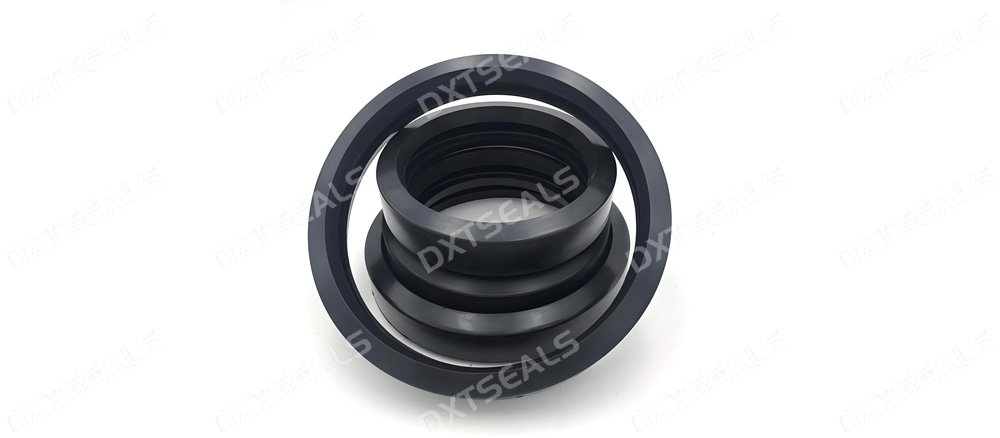Introduction
When it comes to high-temperature applications, the materials used for sealing solutions need to be carefully selected to ensure optimal performance, durability, and reliability. Rubber gaskets play a crucial role in preventing leaks, maintaining pressure, and offering a reliable seal in various industries, such as automotive, aerospace, and industrial machinery.
However, not all rubber gaskets are suitable for extreme temperatures. The right rubber gasket material must withstand intense heat without losing its structural integrity or sealing properties. In this guide, we will explore the key factors to consider when selecting rubber gaskets for high-temperature environments and the best materials for the job.
Factors to Consider When Choosing Rubber Gaskets for High-Temperature Applications
1. Temperature Resistance
The first and most important factor in choosing a rubber gasket for high-temperature applications is its temperature resistance. Different rubber materials have different temperature thresholds. For high-temperature environments, the chosen gasket material should be able to maintain its sealing properties without softening, hardening, or degrading.
Common Temperature Ranges for Rubber Gaskets:
- NBR (Nitrile Rubber): Up to 120°C (248°F)
- EPDM (Ethylene Propylene Diene Monomer): Up to 150°C (302°F)
- Viton (FKM): Up to 250°C (482°F)
- Silicone Rubber: Up to 300°C (572°F)
- PTFE (Polytetrafluoroethylene): Up to 260°C (500°F)
For applications that require temperatures exceeding 250°C (482°F), materials like Viton, silicone, or PTFE may be ideal.
2. Chemical Resistance
In addition to temperature resistance, gaskets used in high-temperature applications often encounter harsh chemicals, including oils, fuels, acids, and other corrosive substances. When selecting a rubber gasket for these conditions, it is crucial to choose a material that is chemically resistant and will not degrade over time due to exposure to these substances.
For example, Viton is highly resistant to fuels, oils, and chemicals, making it ideal for automotive or aerospace applications. On the other hand, EPDM is excellent for water and alkaline environments, while NBR is known for its oil resistance.
3. Compression Set Resistance
Under high-temperature conditions, materials tend to lose their ability to return to their original shape after compression. This is known as compression set, which can lead to loss of sealing ability and eventual gasket failure. Choosing a material with high compression set resistance ensures that the gasket retains its sealing properties even after prolonged exposure to heat.
Materials like Viton and Silicone Rubber are known for their excellent compression set resistance, making them ideal for high-temperature applications that involve sustained pressure or compression.
4. Durability and Flexibility
Rubber gaskets need to be both durable and flexible. While high temperature resistance is essential, the gasket must also maintain its elasticity and flexibility to accommodate thermal expansion and contraction during temperature fluctuations. If the gasket becomes too stiff, it may lose its sealing capacity.
Materials like Silicone Rubber and EPDM maintain their flexibility even under high heat, ensuring a reliable seal.
Best Rubber Gasket Materials for High-Temperature Applications
1. Viton (FKM)
Viton is one of the best materials for high-temperature environments, with a temperature resistance of up to 250°C (482°F). It also has excellent chemical and oil resistance, making it ideal for automotive, aerospace, and chemical processing industries where both heat and aggressive chemicals are present.
Advantages of Viton Gaskets:
- Excellent heat resistance (up to 250°C)
- Superior chemical and oil resistance
- Ideal for automotive, aerospace, and industrial applications
- Excellent compression set resistance
2. Silicone Rubber
Silicone Rubber is another excellent choice for high-temperature sealing, capable of handling temperatures up to 300°C (572°F). Its superior flexibility and elasticity at both high and low temperatures make it a preferred material for applications in the food processing and medical industries, where reliability and non-toxicity are crucial.
Advantages of Silicone Rubber Gaskets:
- Extremely high-temperature resistance (up to 300°C)
- Excellent flexibility at high and low temperatures
- Non-toxic, making it suitable for food and medical applications
- Good compression set resistance
3. EPDM (Ethylene Propylene Diene Monomer)
EPDM gaskets are often chosen for outdoor and water-based high-temperature applications. They can withstand temperatures up to 150°C (302°F) and offer excellent resistance to water, steam, and alkalies. While they are not as heat-resistant as Viton or Silicone, they perform well in environments where exposure to UV or ozone is common.
Advantages of EPDM Gaskets:
- Good temperature resistance (up to 150°C)
- Excellent water and steam resistance
- Ideal for outdoor and automotive applications
- Resistance to UV and ozone
4. PTFE (Polytetrafluoroethylene)
PTFE gaskets can withstand temperatures up to 260°C (500°F) and are known for their chemical resistance. While they are not as elastic as other rubber materials, they offer excellent sealing properties in aggressive environments. PTFE gaskets are often used in pharmaceutical, chemical processing, and food industries where temperature extremes and chemical exposure are common.
Advantages of PTFE Gaskets:
- High heat resistance (up to 260°C)
- Excellent chemical resistance
- Ideal for food, pharmaceutical, and chemical applications
- Non-reactive and safe in a wide range of environments
Conclusion
Selecting the right rubber gasket for high-temperature applications is crucial to ensure the longevity and efficiency of sealing systems in industries like automotive, aerospace, chemical processing, and more. The material you choose will depend on factors like temperature resistance, chemical exposure, flexibility, and durability.
For extreme heat and chemical resistance, Viton and PTFE are ideal choices, while Silicone Rubber offers unparalleled flexibility and high temperature tolerance. For applications involving water or steam, EPDM provides an excellent balance of heat and moisture resistance.
By understanding the specific needs of your application and selecting the correct material, you can significantly improve the performance, safety, and reliability of your high-temperature sealing systems.

